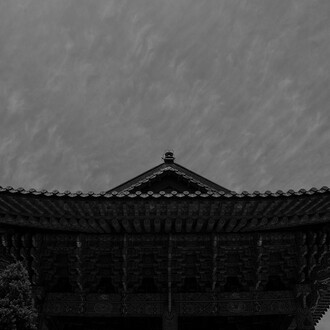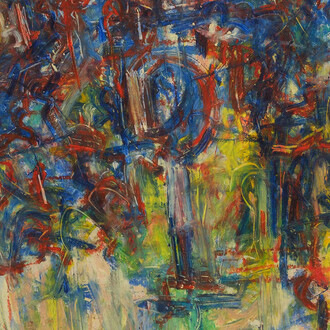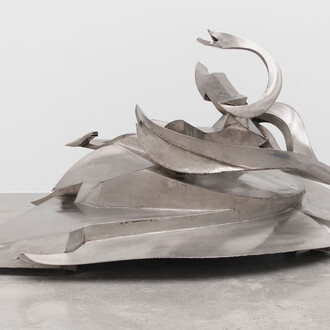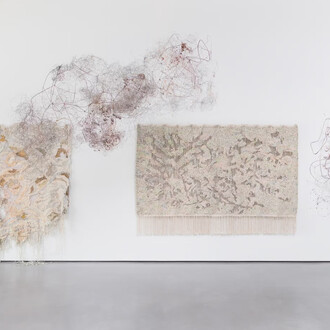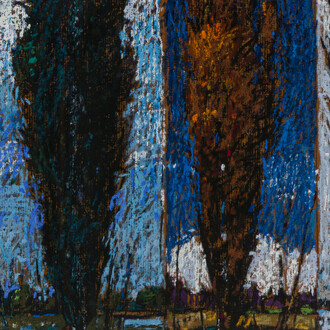Gaa is thrilled to present Antidote, a solo exhibition of new sculptures by Wen Liu. Including a selection of wall and freestanding sculptures molded and cast in epoxy clay and resin, these new pieces manifest Liu’s prolonged interest in and consideration of ideas surrounding transformation, presence, balance, and belonging. Antidote represents Liu’s inaugural solo exhibition with Gaa.
Natural materials, organic forms, and found objects play an integral role in Liu’s methodical practice. Referencing the discarded skins of reptiles, or the distinguishable skeletal system of the female body, Liu kneads, bends, carves, and shapes malleable pieces of clay to create the intricate framework for these sculptures. Through her multi-step mold-making process, Liu pays subtle homage to the reptilian molting ritual, which not only serves as a marker of the passage of time, but also as evidence of growth, development, and renewal. Functioning similarly to an exoskeleton, Liu’s intricately molded structures form the bones which provide support for the delicate elements protected inside.
Encased within translucent resin of various colors, traditional Chinese medicinal herbs form symmetrical patterns in response to the undulating curves and stark lines created by the architecture of molded clay. Resembling pastel gemstones, these pockets of herbal products speak to the prioritization of harmony and balance central to traditional Chinese medicine. With a focus on holistically addressing health and well-being, the approach relies upon a patient’s ability to communicate feelings and symptoms accurately to receive effective treatment. Liu utilizes the practice as a visual metaphor to highlight the difficulties that accompany foreignness: successfully navigating aspects of communication, grappling with concepts of displacement, and establishing a sense of belonging.
Exploration of the traverse between ideologies associated with ‘East’ and ‘West’ continues through Liu’s references to religious architectures and psychological understanding. Through the symmetry and luminosity of her sculptures, Liu alludes to the stained glass windows found in Medieval, Gothic, and Revival cathedrals. Supported by perpendicular ribs and arched buttresses, these portals provide a conduit for energy and light to permeate the interior of the structures. The light itself forms an ethereal connective tissue, creating an inclusive and illuminated space which becomes shared by all who experience its dazzling effect.
This harmonious experience is reinforced in the composition of Liu’s glazed ceramic sculptures. Taking on abstract forms reminiscent of anatomical structures, these clay bodies originate from Liu’s investigation of language and communication. In an experimental calligraphy practice, Liu uses ink to render 和 – the Chinese character hé, meaning “harmony” – onto a sheet of paper, which is subsequently folded while the ink remains wet. The resulting inkblot images emerge as Liu’s unique version of a Rorschach test and inspire sculptural compositions which reference personal identifications of trauma.
Through the transformative process of molting and shedding manifested across her practice, Liu suggests that it is in this identification of trauma and the ensuing navigation of associated emotional, psychological, and physical states where the journey of growth and healing begins.










